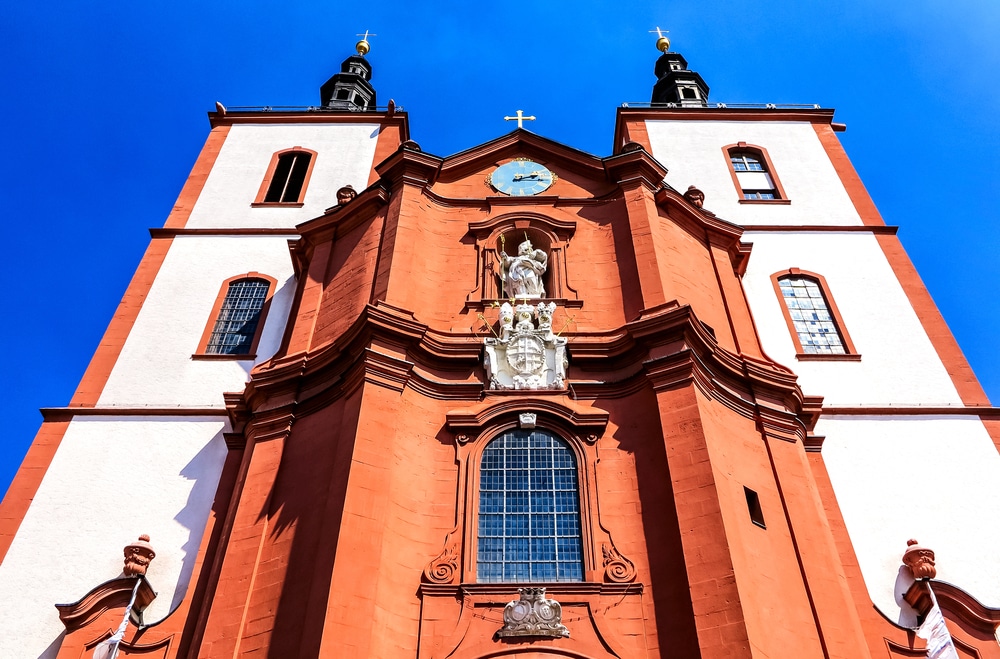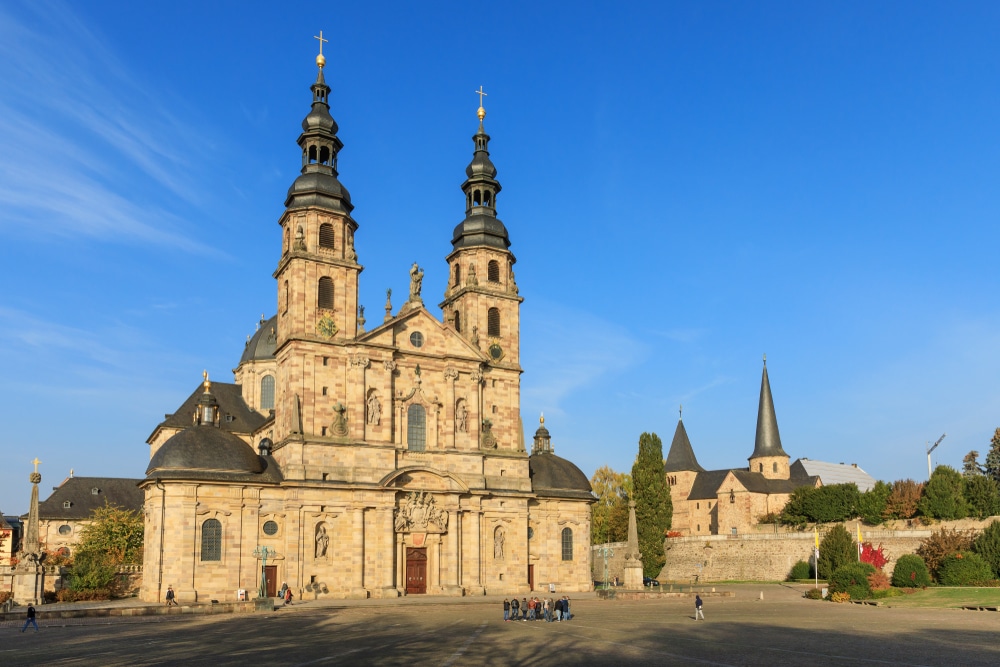St. Blasius

The Jesuit brother Johann Andreas Anderjoch drew the plans for the imposing church, the construction of which is dated to 1771. The completion of the church, built in the Baroque style, took place 14 years later in 1785. Today, St. Blasius is owned by the Catholic Church. Parts of the church stand on the remains of a 15th century Gothic church. A first church was built on the site as early as 970 AD.
Structure of St. Blasius - central nave
The church was designed in the baroque style with three naves, which was common at that time. The mighty central nave is enclosed by two outer naves. In four arcades in the central nave are images of a total of eight apostles. On the right, the apostles Matthew, Judas Thaddaeus, Thomas and Philip were immortalized. Opposite, Bartholomew, James the Younger, Simon and John look down on the faithful. Johannes Andreas Herrlein (German painter) designed the ceiling in the central nave. He was inspired by the biblical stories of the Sermon on the Mount and the expulsion of the money changers from the holy temple. Both frescoes have survived the centuries without substantial damage.
Outer naves
The two side aisles present a less grandiose appearance compared to the central nave. The altar dedicated to St. Boniface is located in the right aisle. Above the massive and richly decorated altar, another painting by Johannes Andreas Herrlein testifies to his understanding of putting biblical representations in the right light with colour. The painting shows St. Boniface with his companions.
The left aisle has a somewhat smaller altar dedicated to St. Aloysius. The altar was only anchored in its present place four years after the completion of St. Blasius. Elaborate carvings on the wings reveal the high craftsmanship of the time. The altarpiece of the Aloysius altar also comes from the studio of Johannes Andreas Herrlein. It depicts Saint Aloysius in a scene with a crucifix.
Bell tower
Today there are a total of six bells in the northern tower of St. Blasius. With one exception, all the bells date from modern times and were cast between 1961 and 1966 by the Otto foundry in Hemelingen (Bremen). The whereabouts of the original bells are unknown. The sixth bell, the Ave or Stray bell, dates from the 14th century and is the only one to have survived the centuries unscathed.
Organ
There is nothing left to remind us of the originally installed organ. Over the centuries, the organ of St. Blasius has been replaced, rebuilt and restored several times. Once equipped with only 17 stops, the instrument grew steadily and today comprises 67 stops distributed over five manuals. The present organ is based on the instrument built by the Eggert Orgelbau-Anstalt in 1900. Further alterations were made in 1942 and 1961.
War and destruction
St. Blasius was hit several times during the last years of the war, but was not fundamentally damaged. On September 11, 1944 and December 27, 1944, almost one third of Fulda was destroyed. The aerial bombs caused considerable damage in the baroque quarter of the city. In total, Fulda had to mourn 1595 war dead. St. Blasius underwent extensive renovation at the beginning of the 1950s. Hugo Pfisters and Oscar Pejas (church painter) took over the restoration of the damaged paintings. The repair of the damage caused by the Second World War took several years.

